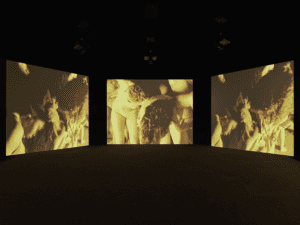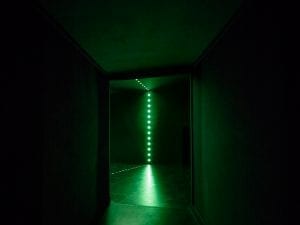“With cities, it is as with dreams: everything imaginable can be dreamed,” states Italo Calvino (1923-1985) in his 1972 novel, Le città invisibili. This text is the inspiration behind Invisible Cities: Architecture of the Line at Waddington Custot, London, which brings together a group of international artists who, similarly to the writer, examine the theme of idealism.
Amongst works by Giorgio de Chirico (b. 1888), Fausto Melotti (b. 1901), Maria Helena Vieira da Silva (b. 1908) and Giulio Paolini (b. 1940), Tomás Saraceno (b. 1973) is a highlight of the show. Featured in the exhibition is one of Saraceno’s installations that made its debut at the Metropolitan Museum of Art’s rooftop garden in New York in 2012. Communicating the artist’s interests in the ideal urban space, the sprawling interconnected structures were crafted with transparent and reflective materials to blur the boundaries between manmade architecture and the natural landscape. Not only does the project function as an intriguing and physically engaging site-specific work, it also aims to develop a “modular and transnational city in the clouds” that depicts a blueprint for sustainable and emancipatory building practices.
This work is part of a longer research project entitled Cloud City, a proposed prototype for living in the air. The artist’s fascination with geometries from the natural world is demonstrated through a reconstruction of spiders’ habitats. Basing the project on arachnids’ weaved structures, it is no surprise that the piece can be compared to the fictional spider-web metropolis in Calvino’s novel. The installation comprises hanging sculptures resembling bacteria, clouds and neural communication networks, which are interwoven into gardens and museum interiors.
Through this unique show, both text and installation push the boundaries of how audiences might envision urban idealism: Calvino discusses fictional cities with regards to aspects of the human condition like memory and desire, whilst Saraceno, alongside the various other sculptors and painters in the show, translates the notion of the responsive city through contemporary media, as a way to make sense of what “can be dreamed”, and, indeed, realised in the 21st century.
Invisible Cities is at Waddington Custot, London until 4 May. More information about the exhibition can be found here.
Credits:
1. Tomás Saraceno, Q2343-BX442/ M+I, 2014, metal, fishing line, plexiglass iridescent, steel thread. Courtesy Lorena Ruiz de Villa.





